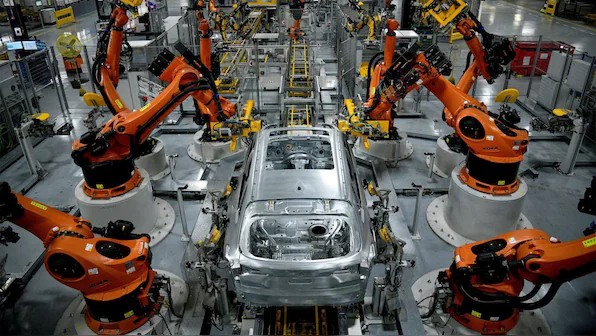India and Vietnam are becoming key beneficiaries of the “China Plus One” strategy, which aims to diversify supply chains away from heavy reliance on China. A recent report by Nomura highlights that this shift is expected to open new growth opportunities across Asian economies.
Companies and their Chinese manufacturing partners that have relocated to Vietnam and India have reported impressive results. Increasingly, EU and US-based companies, like Tesla, are encouraging their partners to follow suit.
Nomura projects India’s export potential to rise significantly, reaching $835 billion by 2030, up from $431 billion in 2023. This growth is driven by India’s robust domestic market, attracting companies looking for alternatives to China for their manufacturing and supply chain needs.
Industries such as electronics, apparel, toys, automobiles, capital goods, and semiconductor manufacturing are increasingly viewing India as a favorable investment destination due to its large consumer base.
The electronics sector is expected to see the fastest growth, with exports anticipated to achieve a compound annual growth rate of 24%, reaching $83 billion by 2030. Machinery exports are also projected to more than double, increasing from $28 billion in 2023 to $61 billion by the decade’s end.
Nomura notes that despite relatively modest production-linked incentive (PLI) disbursements, India is well-positioned for deeper integration into global value chains. The country’s appeal stems from its large market size, rapid economic growth, competitive labor costs, and stable political and economic environment. These factors make India an attractive destination for manufacturing consumer goods for both domestic consumption and export.
Companies and their Chinese manufacturing partners that have relocated to Vietnam and India have reported impressive results. Consequently, more EU and US-based companies are encouraging their partners to move to these countries. Recently, reports indicated that US-based EV maker Tesla has asked its partners to focus on India and Vietnam.
Nomura predicts that India’s share of global trade will rise to 2.8% by 2030, driven by its growing production capabilities. This increase in trade is expected to improve India’s trade balance and current account, potentially leading to currency appreciation.
Nomura’s research also highlights rising investor interest in India and Vietnam. US-based companies, especially in the electronics sector, are prominent investors in India, with Japan and Korea also making significant investments in sectors like auto, consumer durables, and electronics. These investments aim to leverage India’s expanding domestic market and utilize the country as a strategic manufacturing hub.
Looking ahead, the strengthening of India’s manufacturing sector and its increasing share in global exports are expected to bolster corporate sector growth, supporting robust earnings growth rates of 12-17% over the medium term.
